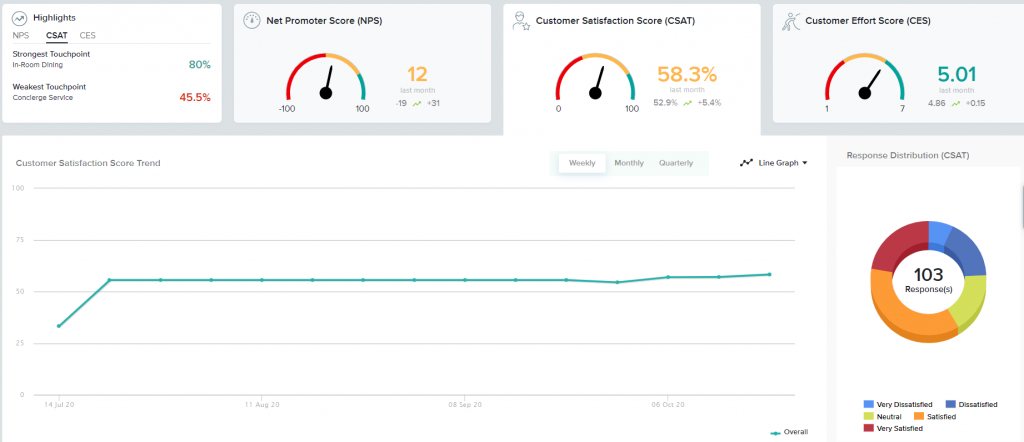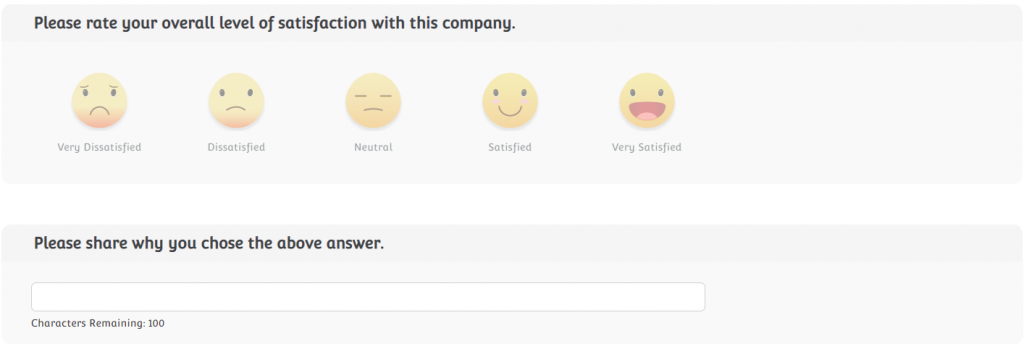Why care?
Organizations spend billions of dollars every year on digital technology apps that accumulate, dissect, and evaluate the Big Data around markets that involve customer experiences (CX), customer journeys, and customer journey mapping. Thrown into the mix are market segmentation and its numerous versions (i.e., demographic, psychographic, etc.), converging on profiling and in-depth understanding of every customer touchpoint from end-to-end.
All of the above aim at quenching a thirst for understanding customer behavior. Delving into why viable customer groups (or even individuals) do what they do when buying products and services for themselves, their families and friends, and the businesses they represent.
Much of the field centers on analytics. New age scientists are on a high when computers are humming and spitting out all kinds of patterns that tell us more than we thought we could ever know.
Perhaps it would help to pause for a moment; simply ask the customers why they acted the way they did in a given situation to get it straight from the horse’s mouth if you will. Many sales enablement teams are doing exactly that in a growing marketing research arena popularly known as customer feedback.
A jumping off point
Getting started can be the hardest part. To help get you rolling, here are some customer feedback questions that are connected to CX touchpoints:
- Why did you disappear after your online chat?
- What decided you on the giant pack instead of buying one at a time?
- Why did you switch brands?
- Why didn’t you pull the trigger?
- Why didn’t you leave a tip?
- Did the Facebook ad change your mind?
Customer feedback is an invaluable information stream on a whole range of CX touchpoints, and there are many ways of getting at it. This article opens five mainstream methodologies to give you a comprehensive overview of the customer feedback loop.
Establishing a customer feedback loop
One of the principal benefits of customer feedback is using the information to respond to negativity and complaints before too much damage occurs. When the company loops back, it means the business addresses the dissatisfaction in an attempt nullify it. However, The customer feedback loop doesn’t only apply to problems. Reviews are often positive or encouraging. Here’s an example:
After a writing assignment, a digital agency client sent me a message that the content was engaging and that its client was pleased with the blog. Still, future business looked “iffy” because my fees were a little high for most article submissions. I responded that I understood; however, I also develop pitch decks, and my mainstream business is web page development. Since then, I’ve had only a few articles requests but a steady stream of other business from the same B2B customer.
Customers, as a rule, appreciate the feedback loop for one substantial reason—it signifies recognition. You noticed them for good or bad and went out of your way to remedy issues or enhance benefits, whatever the case may be.
Methodologies to round out your loop
1. The Customer feedback survey
Surveys are the “big easy” of all customer feedback options. Why? Companies find it a straightforward process. By structuring it around a well-proven survey feedback template science, they are simple to distribute and a cinch to analyze. The best results emerge when surveys are a maximum of ten questions, going down to as low as one. You don’t want responders to abort the exercise because it’s too involved. Quick responses to thoughtful questions can do wonders for your investigations with eager audience participation. For example:
The example is a combination of limited response alongside an open-ended question to create valuable insight into one event, inside a minute of the customer’s time. I suggest the following approach:
- Don’t waste survey space on “nice to know” questions. The focus should be on revealing, penetrative, and groundbreaking customer feedback that creates opportunity and a meaningful competitive edge. Every customer feedback survey must count in terms of the time and effort that staff spend compiling and analyzing them.
- Look for shortcuts to complicated exercises. Trying to get a feedback survey back from customers and following it up with incisive marketing programs, including CX and multiple touchpoints in the mix, is complicated. Therefore, use all the help you can get.
- Consult the experts. Companies like Sogolytics represent extensive coverage of surveying customers in B2C and B2B markets. The company also focuses on feedback from end-customers in the B2B pipeline. They have digital and offline customer feedback templates for every market segment with distribution and evaluation instructions in tow. Why reinvent the customer feedback survey-wheel when it’s stylized and already rotating at a furious pace?
- Get scores on customer ambassadorship, churn triggers, and retention influencers. Evaluate them alongside customer comments generated by customer feedback surveys that are engaging and provide excellent insight. Sogolytics will show you how, when, and where to include the surveys on your site. Feedback that’s disconnected timewise loses impetus and leaks value. Get in fast when memories are fresh.
- Before customers can respond to a survey, they need to see it and open it. Frequently companies make confusing or elementary errors that doom a feedback survey before it begins (e.g., the subject line in the email invite is unclear). Expert advice goes a long way toward removing basic missteps from the customer survey equation.
2. Feedback Boxes
Customer feedback and feedback boxes go together like Tweedledee and Tweedledum. The latter are website feedback forms conveniently located for visitor use when they want to say something quickly and without hassle that isn’t severe enough to warrant customer service support. Feedback outlets like this encourage customers to point out small issues on impulse and indicate that you value customer contribution. They signify your eagerness to get fast feedback on brand performance and CX—especially if you’re ready and willing to respond to all feedback box messages inside a day.
Yes, within a day! It’s a fatal error to let customers and prospect commentary go unaddressed. This is the essence of the feedback loop dealt with above. Anyone who takes time (even seconds) to reach out is engaged, expecting an answer. It’s an opportunity to offer an incentive next time they buy, turn a new prospect into a new customer, or provide them with a solution to their problem or query.
We offer this caveat before you start putting feedback boxes on every landing page: Make sure they work well; otherwise, responders become frustrated. Don’t let the boxes become a site corruptor when the goal is at the root of brand enhancement, not deterioration. Get feedback seamlessly or leave them out.
3. Reaching Out Directly
Surveys, emails, and data analytics can only go so far. They can’t read voice inflection, body language, or passion. They also can’t probe issues to get more relevant information. There’s so much in a discussion (one-on-one or in a group) to add to your customer information bank. If anything is bothering you in your design, services, promotions, or web communications (a few examples) that require back-and-forth conversation, organize customer focus lunches that merge into panel discussions.
In some cases, you may need professional interviewers to get to the bottom of things with structured techniques. It can be a little more expensive, but genuinely worthwhile because one direct interaction could prove to be more revealing than hundreds of surveys.
4. User Activity from Your Touchpoint Analysis
Use analytics with pinpoint accuracy to be touchpoint-centric. Again, this is where a company like Sogolytics can help a lot. Employ SaaS technology to move away from looking at customer web navigation in a general sense. You want to know:
- Where the audience stopped.
- What caught their attention.
- What didn’t but should have.
- If the visitors followed the track you intended at vital touchpoint junctures.
- And if not, is there an obstruction trend, or is it a one-off?
User feedback along the lines described above can tell you precisely what’s working on your site and what’s not. It can zone your attention in on digital snags and inadvertent items in the content you never intended. It’s the modern way to collect information on customers and data. With careful thought, you may conclude that specific demographics work better for you than others. A robust database allows market segmentation to take on a behavioral meaning that you can translate into substantial ROI improvement. This arena can become technical, so it’s advisable to contract professional input, especially when the next category—usability tests—applies.
5. Usability Tests
If provided with a brief, dedicated CX consultants can digitally observe your customers as they browse sections of your website and social media addendums. It cost thousands of dollars back in the day, but in 2020 it’s offered as a standardized SaaS-assisted service that’s easily affordable. Sign up processes, transitioning to the buying cart, moving between the pricing and services pages, and more qualify for this observation type.
Alternatively, you can incentivize a typical (emphasis on typical) user to enter a user experiment. The “laboratory” theme can create a degree of artificiality. However, as crude as it may seem, it often results in uncovering CX revelations. One thing, don’t bring friends and family into this testing mode—it pushes things across the line with an unacceptable degree of bias.
Make the most of your feedback
Your efforts for feedback are futile if you don’t actually use it to better your business. Once you get feedback, considering taking the next steps:
- Rate the issues in terms of cruciality and ROI impact.
- Look for customer feedback trends.
- Don’t view the data in isolation. Look for the integration of the data points.
- Define action plans to address the listed items.
- Organize project teams to execute.
- Keep the customer feedback going in a never-ending search for change.
Never lose sight that every piece of information learned and used in the marketing strategy translated into change. It should have improved your product and service performance, leading to better content, media communications, and faster, more exciting customer activities. It’s a circular process that aims at ultimate perfection.
Sogolytics, as a CX and touchpoint specialist, can help you close the loop. Affordable and effective, they can streamline the process so you can carry on with other challenges.










